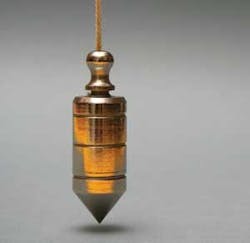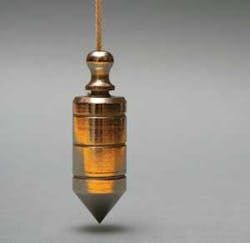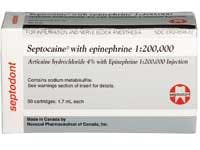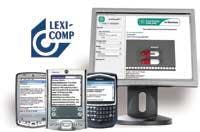Tried and true products to enhance your practice
Dental materials and equipment continue to undergo constant change: new technologies appear, some become extinct, and still others endure and improve. Are you taking advantage of all the benefits they can offer?
For more on this topic, go to www.dentaleconomics.com and search using the following key words: tried and true, products, product choices, benefits, change, Dr. Michael Curtis.
Are you overwhelmed with product choices for your practice? Which can save you time, reduce your stress or help your business? Which are best for your patients? The following are some “tried and true” choices to enhance your practice and guide you through the jungle of product choices:
1) Articaine
Articaine is considered to be the best–selling local anesthetic in the world. And for good reason. Despite some studies, most dentists have found that it provides deeper anesthesia, with far fewer missed blocks, than other anesthetics. It also exhibits superior diffusion properties, so blocks are not needed for lower premolars forward, only lower molars. Moreover, you only need half a carpule. So you also deliver less epinephrine and produce less trauma. For compromised patients, consider 1:200,000 carpules for even safer injections. (Brands: Zorcaine, Cooke/Waite–Kodak; Septocaine, Septodont)
2) Chairside sandblaster
Do you have a micro–etcher in each operatory? Get one today! Sandblasting internal surfaces of crowns will double their retention. Bonding to old resin requires sandblasting for new composite to adhere. Intraoral porcelain repairs also require micro–etching.
One–step bonding agents bond poorly to uncut enamel margins. A quick blast from a microetcher roughens enamel to produce longer–lasting restorations. Do the same for no–prep Class Vs over abrasions or abfractions.
Use your sandblaster to remove old cements, clean preps (including those for posts), or remove stains. Blast out grooves before applying sealants to improve retention. Prep incipient lesions without anesthetic. Call your rep to install an extra air line in each operatory. (Brands: Danville; Parkell. Cost: approximately $200)
3) Payment plans
Why do many people avoid dentistry? Cost! Dental financing cards offer an answer, but many patients who need them are rejected. What do you do? Try the “Enhance” and “Help” cards. They separate patients into several tiers to provide programs for even marginal patients. To cut your discount rate, ask for a down payment (accept it on a credit card for 100% financing). (Enhance Patient Financing (877) 436–4262; HELPcard (888) 750–6793)
4) Better antibiotics
Are you still using the same antibiotics we were taught to use in school? Here are some alternatives to consider:
→ To increase compliance and build your practice, make antibiotics easy for patients. Consider the Zithromax “Z–Pak.” It's taken once a day for five days, yet provides 10 days of coverage. For perio infections, try doxycycline (Rx: 100 mg once per day).
→ What should you do when the antibiotic does not work after two or three days? If you've prescribed penicillin, amoxicillin, or Zithromax, add Flagyl (metronidazole) to get more anaerobes. (Rx: 250–500 mg x 20 Q6H.) Or switch to clindamycin. This medication is effective against anaerobes, will kill penicillin–resistant organisms, eliminates worries of allergic reaction, and is inexpensive. Colitis is extremely rare (virtually negligible) for dental regimens. (Rx: Cleocin 150 mg x 20 TID).
→ For more about amoxicillin, Keflex (why you shouldn't use either), erythromycin (critical update), Augmentin, and key antibiotics, see the “Anesthesia” guide at our Web site.
5) Dental insurance tips
Are you sending electronic claims? Sixty percent of dentists are not. What a mistake! Call your software support people or National Electronic Attachment (NEA) today. Electronic claims are cheaper to send. They are also typically paid in only five days for easier collection of co–pays. [NEA: (800) 782–5150]
Did you know that 40% of dental claims are denied due to clerical errors or missing information? Electronic claims automatically flag such claims before problems occur. They also stop mistakes and “lost claims” by eliminating manual data entry by distracted clerks.
You do not need digital X–rays or high–tech equipment to send X–rays, narratives, and photos electronically. Just get a scanner with a Transparency Materials Adapter (TMA, from $250 to $1,000). For how to do this, see our free newsletter (sign up at www.HundredsofPearls.com).
6) Sedation explosion
Sedation allows you to help fearful patients who may have avoided the dentist for years. It also allows you to do longer, more productive procedures all in one visit.
Halcion (Triazolam) oral tablets have a duration of only three to four hours, followed by a speedy recovery. Patients often fall asleep during treatment. This drug has a wonderful amnesia effect, so people commonly remember little of their visit.
Dosage varies, but my most common adult regimen is three, 0.0125 mg tabs one hour before the visit. Add nitrous oxide for more profound sedation. Halcion is an extremely safe drug, but you should get training. For courses, check out the Dental Organization for Conscious Sedation. (www.DOCSeducation.org, (877) 325–3627. Cost: approximately $2,000)
7) Drugs and medical conditions
Who can know the hundreds of medical conditions and drugs that are prescribed? Enter Lexi–Comp's electronic references. Look up medications or medical problems in seconds on your operatory computer, pocket PDA, or BlackBerry. Avoid malpractice. Be more thorough, and gain enhanced respect from your patients and staff. [Lexi–Comp (800) 837–5394; cost: approximately $175]
8) Comfort tips
→ Loupes and headlight: You cannot treat what you can't see. I recommend 3.5 magnification loupes. If you don't use a headlight, stop now and get one. You will wonder how you worked without it. Check out Orascoptic, Designs for Vision, and Surgitel brands. (Cost: approximately $1,300 for loupes; approximately $900 for headlight)
→ Vaseline, safety sunglasses, and more: Ensure that patients know you care about their comfort. Routinely spread petroleum jelly to soften patients' dry lips. Provide safety sunglasses to keep out glaring light and protect patients' eyes. Offer a fleece blanket so patients don't get cold. Use a pedo bite “rest” (bite block) to help jaw muscles relax.
→ Aleve/Tylenol: Consider suggesting two Aleve or Tylenol before procedures for easier anesthesia and significantly reduced discomfort postop.
→ Small talk: Do you want to offer the ultimate “wow” experience? Speak about vacations, children, movies, restaurants, hobbies. Then keep notes about your conversations. Refer to previous conversations on subsequent visits. People will love that you remember them and have a personal relationship with them!
9) Root canal secrets
Many new patients seek dental care because of pain. Your ability to treat them can lead to comprehensive care for a lifetime — or a lost opportunity. If you do little or no endodontics, consider incorporating this procedure to thrive in these recessionary times. Some tips:
→ Once you get through a calcified orifice, canals are almost always patent thereafter, no matter how they appear on X–rays. To help open a tight canal, first bathe the chamber for several minutes in 17% EDTA solution such as “Smear Clear” (SybronEndo).
→ To find a calcified or hidden orifice, try a half round LN (DENTSPLY) or Mueller bur (Brasseler). Trough down slowly 2 mm to 3 mm through dentin that appears bright white in the chamber floor until the orifice opens. Better yet, use an endo ultrasonic instrument, such as the MiniEndo II (SybronEndo).
→ Once open, alternate EDTA with full–strength (5.25%) hypochlorite. Warm it in a microwave for 50% better results. A rubber dam is essential to keep dangerous and foul–tasting solutions away from the oral mucosa. To seal the dam around clamps, use the same liquid dam that you would use for whitening. (e.g., Opaldam by Ultradent.)
Dr. Michael Curtis is author and editor of the “100s of Pearls” guides. Thousands have sold in all 50 states, as well as 27 countries. For questions, visit www.HundredsofPearls.com or call (800) 427–2830. Dr. Curtis also maintains a private practice in Connecticut.






